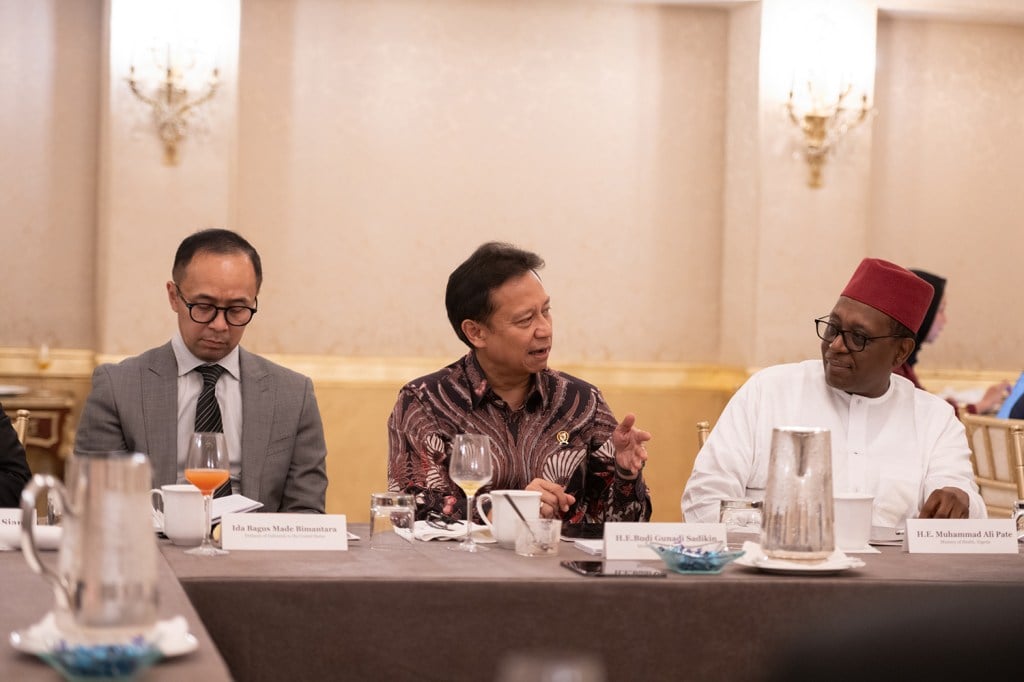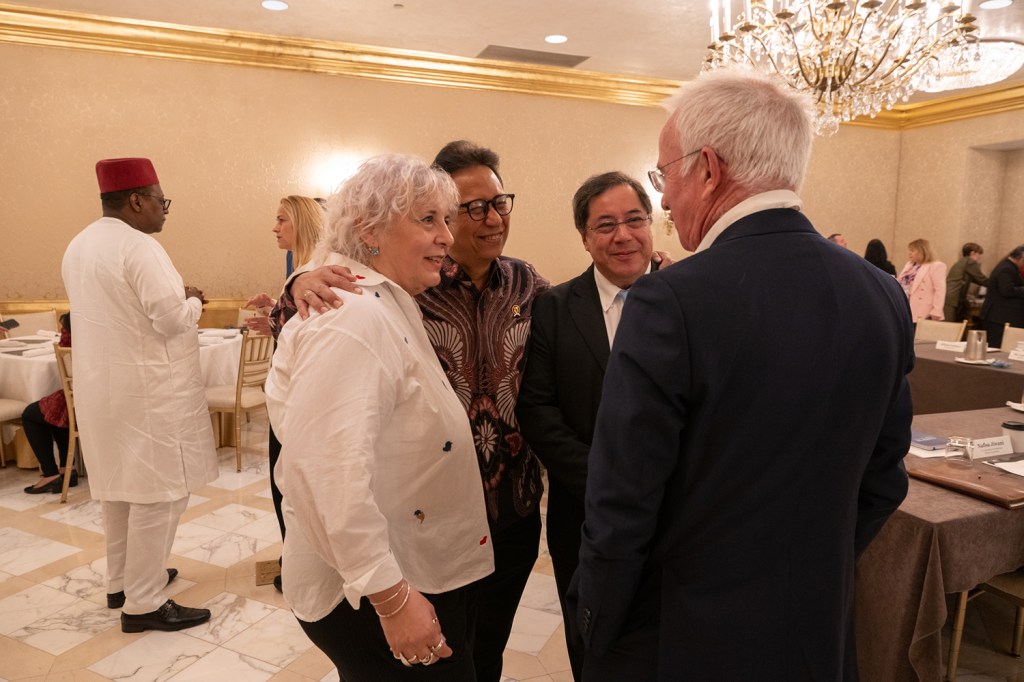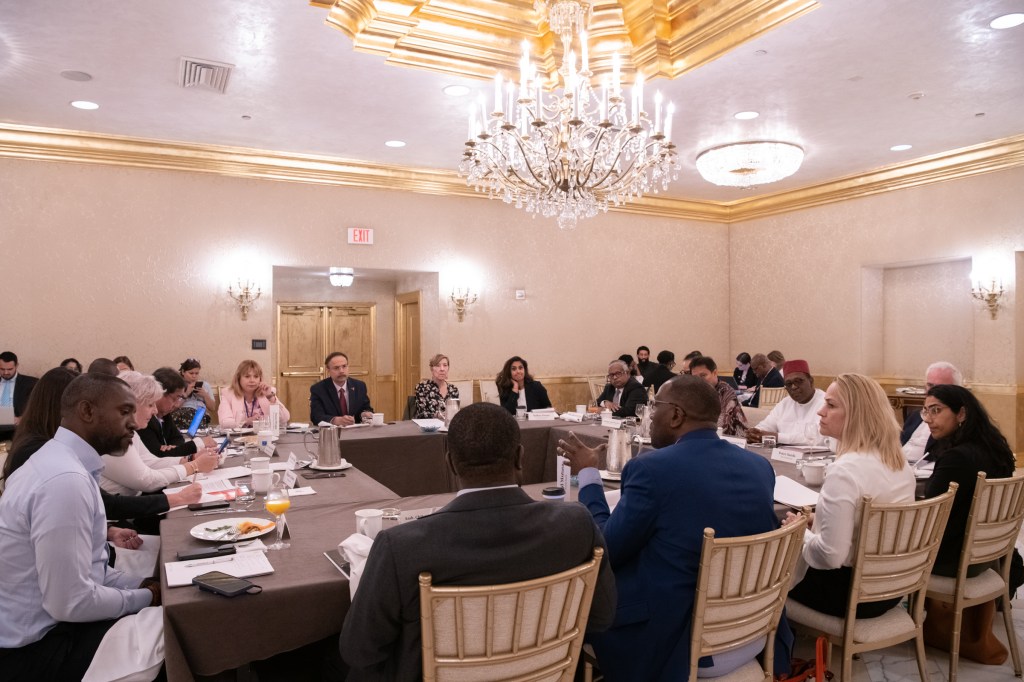Global Health Reset
Stopping TB Through Smart Investments
A synthesis of the high-level roundtable
held in collaboration with the Stop TB Partnership on April 23, 2025
Significant progress has been made in recent decades to prevent and treat tuberculosis (TB) with an estimated 79 million lives saved since 2000 through concerted global efforts. Yet, TB remains the leading cause of death from infectious disease, and building on efforts to date will require sustained financing. The fight against TB has long been dependent on funding from international donors and financing partners, particularly the United States, which has played a key role in driving prevention, diagnosis, treatment, and research programs. The World Health Organization (WHO) estimates that USD 22 billion is needed annually to achieve global targets on TB elimination, but over-reliance on a limited number of funding sources leaves critical health programs susceptible to disruption and discontinuation. The January 2025 freeze of U.S. foreign aid has demonstrated the vulnerabilities inherent in overreliance on external donors, and highlights the need for an increase in country-led, diversified, and sustainable financing for global health.
In April 2025, Foreign Policy and Stop TB convened a high-level roundtable on the sidelines of the World Bank/International Monetary Fund Spring Meetings, the second in a series of discussions launched at the World Economic Forum in January 2025. The convening brought together ministers of health, representatives from multilateral financing institutions, and representatives from the private sector, to discuss the need for a reset on funding TB and other diseases at the national and global level. The wide-ranging discussion covered topics including the importance of innovative and blended financing, localization and domestic resource mobilization, and public-private partnerships. The roundtable took place under Chatham House Rule. Key takeaways from the discussion are as follows.

Key takeaways
As the donor landscape for TB shifts, ongoing challenges are exacerbated by shrinking funds
Participants kicked off the discussion noting that significant progress has been made in eliminating TB and other communicable diseases, such as HIV, in recent decades—-an achievement to be celebrated. However, this progress is threatened by a sudden shrinking of funding from traditional sources, such as the U.S., which historically has contributed USD 200 to 250 million annually in bilateral funding for TB, alongside cumulative contributions of USD 26.31 billion to the Global Fund since its establishment in 2002. While level funding for TB activities was announced in March 2025, the future of the U.S.’s extensive TB prevention and treatment activities remains in doubt, and one estimate found that nearly 80 percent of TB activities were affected by the January 2025 foreign aid freeze. Additionally, ongoing challenges such as the growth in drug-resistant TB and disruptions to diagnosis and treatment due to COVID-19 represent a major threat to global health progress and are compounded by recent contractions in TB donor funding. The increase in multi-drug-resistant TB (MDR-TB), for example, requires the manufacture and use of treatments that are significantly more expensive than traditional TB medications. A recent study of MDR-TB treatment in multiple countries found that the costs of drugs can range between USD 2,400 and USD 14,000, compared to around USD 40 for non-resistant TB treatment.
Disruptions to the status quo present an opportunity to restructure TB financing and activities for greater sustainability and effectiveness
Despite the challenge that funding reductions pose, participants agreed that this current moment represents an opportunity for stocktaking and analysis, with the shared goal of making TB prevention and elimination more efficient, effective, and sustainable. As one participant noted, changes in traditional donor structures represent “not a time for desperation, but to be active, be agile, be smart, come together in a different way, and challenge a lot of the things we do and the ways we do them.” As the global health community at large pivots toward a focus on national government-led health activities, domestic resource mobilization (DRM), and blended financing, with a reduced reliance on external donors and overseas development assistance (ODA), the year 2025 represents an opportunity for stakeholders in the fight against TB to make similar changes.
Roundtable participants working in Africa highlighted the innovative strategic thinking taking place there at the multilateral level, from the African Union, Africa CDC, and especially at the national level led by ministers of health and finance. In the face of growing debt, outdated strategies, and low budget allocation to health, the document seeks to galvanize country ownership to create stronger, more effective health systems across Africa. Key to this process, and to country ownership over TB prevention, diagnosis, treatment, and elimination is DRM, supported by innovative financing models such as blended financing and public-private partnerships. Multilateral institutions represent a critical partner in this, given their role in coordinating regional goals to maximize economies of scale, their ability to leverage catalytic funding, and the lengthened timelines they work within, which outlast political terms and upheavals. However, participants agreed that transparency, coordination, collaboration, and trust between multilateral institutions and government partners are crucial to long-term success in the fight against TB.

Country-led approaches and localized strategies are key to success in the fight against TB
All participants agreed that the new model to end TB should rest on a foundation of country leadership, in which the ministries of health in TB-affected countries design and implement tailored strategies to meet the needs of their populations. Many noted that there is a disconnect between the high-level conversations that take place at global convenings, such as the World Health Assembly, or the World Bank/IMF Spring Meetings, and the reality of TB prevention and treatment on the ground. This disconnect is echoed and exacerbated by a tendency, as described by participants, of global NGOs, philanthropies, and bilateral donors to bypass domestic government partners and work directly with local NGOs. While local NGOs are crucial allies in TB prevention and elimination, national government coordination and involvement is necessary to build long-term capacity and ensure adequate budgets for the necessary work. Aligning high-level, governmental, and grassroots priorities will be key to effective intervention against TB, as will acknowledging that there is no one-size-fits-all approach to TB elimination.
One critical component of pivoting to a country-led model will be increased research and development within affected countries, to ensure that product innovation reflects the needs and realities of target communities, and addresses challenges such as extreme weather conditions or inadequate infrastructure. For example, participants highlighted the promising development of the M72 TB vaccine, MTB Vac and others, and called for them to be manufactured locally or regionally in the areas most affected by TB.
Participants called for an end to siloes within health care strategy and implementation, at the global, national, and local levels. Eliminating siloes could include leveraging existing health care infrastructure or workforces that have historically focused on specific goals—such as HIV prevention and treatment, nutrition, and diabetes—to include TB within their remit, particularly where TB is a common co-morbidity. To that end, national health strategies need to take an integrated approach, acknowledging that TB prevention and elimination is a critical factor in priority areas such as maternal, newborn, child, and adolescent health, as well as ensuring that marginalized and underserved populations are included in all activities. Integrated strategies, budgets, and infrastructure can enable limited resources to stretch further, as well as ensuring that TB remains an ongoing priority and thus supporting sustainable action.

The private sector can complement and support the fight against TB, both globally and locally
Throughout the discussion, participants repeatedly emphasized the private sector as a key partner in TB prevention, detection, and treatment, calling for greater collaboration and coordination. In particular, the private sector is an incubator for innovation, which is necessary to address long-term and emerging challenges, including MDR-TB and the effects of climate change. Roundtable participants called for private-sector involvement in the development of new diagnostic tools to transform the next phase of the fight against TB, identify effective and low-cost treatments, and scale manufacture and distribution of resources. In addition, the private sector could be increasingly involved in data collection, sharing, and analysis, to support more effective interventions against TB and a deeper understanding of the spread of challenges such as MDR-TB. Participants shared that private-sector allies are keen to work with ministries of health but struggle to find the right person or space with which to engage, indicating a need for greater clarity and transparency within public health systems to support collaboration. Multilateral institutions also have a role to play in forging connections, coordinating complementary—rather than overlapping or duplicative—public- and private-sector work, and de-risking public-private partnerships.

Looking Ahead
A sustained global effort is imperative to meet Sustainable Development Goal 3.3 on communicable diseases, which calls for a 90 percent reduction in TB deaths and an 80 percent reduction in the TB incident rate. Continued progress can only occur through the leadership and coordination of the governments of countries where TB remains a significant threat to public health. Stakeholders from across the public, private, multilateral, and non-profit sectors can support and complement locally-led work, particularly through innovative financing and partnerships, and through continued research and development of TB therapeutics and preventive measures such as vaccines.

This synthesis report from FP Analytics, the independent research division of The FP Group, was produced with support from the Stop TB Partnership. FP Analytics retained control of the findings of this report. Foreign Policy’s editorial team was not involved in the creation of this content.
